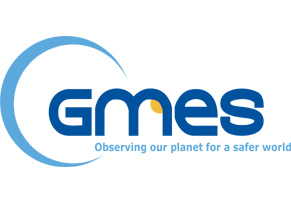Detailed specification of benchmarks
The SANGOMA benchmark system is made of a hierarchy of assimilation problems of increasing complexity, specified as follows.
Small case benchmark: Lorenz-96 model
The small case benchmark is based on identical twin experiments performed with the Lorenz-96 model with 40 state variables.
Time settings. The model is spun up from t=0 to t=150 (remind dt = 0.05). Assimilation experiments start at t0=150 and end at t1 in [1000, 2000]. These values are in agreement with `standards' used in several assimilation studies with the Lorenz-96 model (e.g. Nakano et al. 2007, Sakov et al. 2012) and could be adjusted.
Uncertainties in the system. Uncertainty is introduced in the initial condition of the assimilation experiments at t0. This uncertainty is assumed Gaussian with zero mean and covariance P0 which is set to the covariance of the variability of the model spin-up (for t in [100, 150]).
Observations. Observations are extracted from the reference simulation (without perturbation of the initial condition). Observations are available for all state variables at every time step. Observation error is assumed Gaussian with zero mean and covariance R = σ² I, with σ in [1,2]. However, to increase the complexity of this small case benchmark and make non-Gaussian behaviours more apparent, it must also be possible to reduce the spatio-temporal density of the observations (cf. references above).
Medium case benchmark: double-gyre NEMO configuration
The medium case benchmark is based on identical twin experiments performed with the square-box NEMO configuration.Time settings. The model is spun up from rest for 40 years (remind dt = 15 min). Assimilation experiments start at t0=40 years and end at t1=42 years (flexible values).
Uncertainties in the system. Uncertainty is introduced in the initial condition of the assimilation experiments at t0. This uncertainty is assumed Gaussian with zero mean and covariance P0. P0 is set to the covariance of the variability of the model spin-up between years 20 and 40 (sampled every 5 days).
Observations. Observations are extracted from the reference simulation (without perturbation of the initial condition). Observations are assumed available for sea surface height and for some vertical profiles for temperature, every 5 days. As in small case benchmark, the observations coverage could be degraded by simulating satellite tracks (see figure below for example; the code will be delivered to all participants or at least the `observations' files corresponding to the restart file). Observation error is assumed Gaussian with zero mean and covariance R = σ² I, with σ=5 cm.
Large case benchmark: North-Atlantic 1/4° NEMO/LOBSTER configuration
The large case benchmark is based on realistic assimilation experiments performed with the North Atlantic NEMO configuration at 1/4° resolution.
Time settings. A reference interannual simulation is available between January 1989 and December 2010 (with restart files every year). Assimilation experiments start on January 1st, 1998 (t0) and last for at least 4 years.
Uncertainties in the system. Uncertainties in the system occur for many different reasons (model dynamics, parameters, forcing, initial and boundary conditions). It is an important duty of the assimilation system to make correct assumptions about the uncertainties. The purpose of a realistic benchmarks is thus also to evaluate the quality of these assumptions.
Observations. The three following observations datasets will be assimilated:
- Altimetric data (together with appropriate geoid data);
- ARGO float data (temperature and salinity);
- Ocean colour data.



